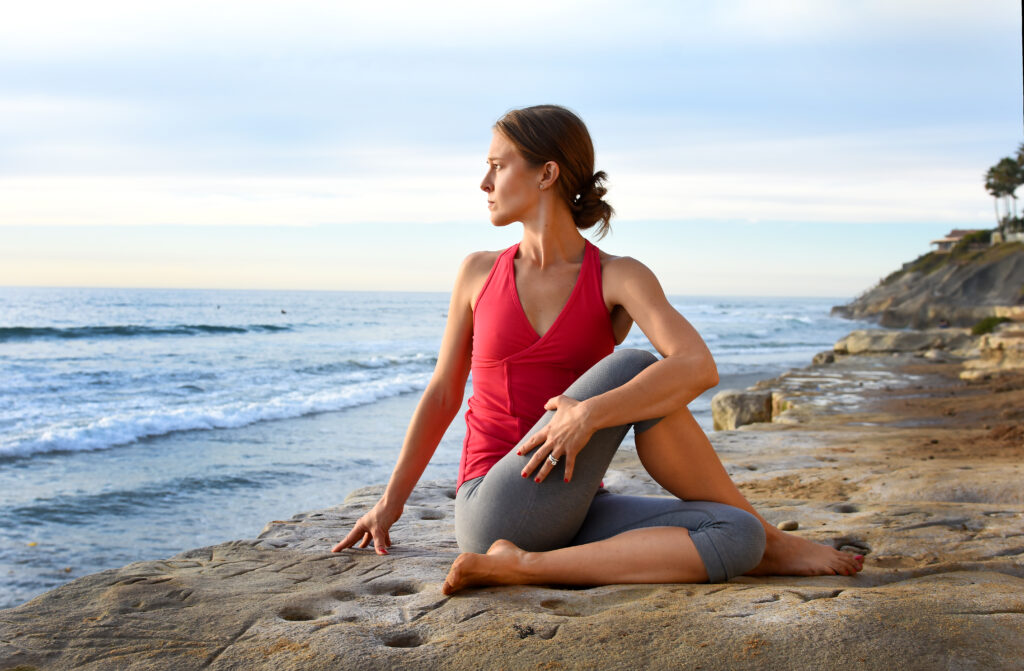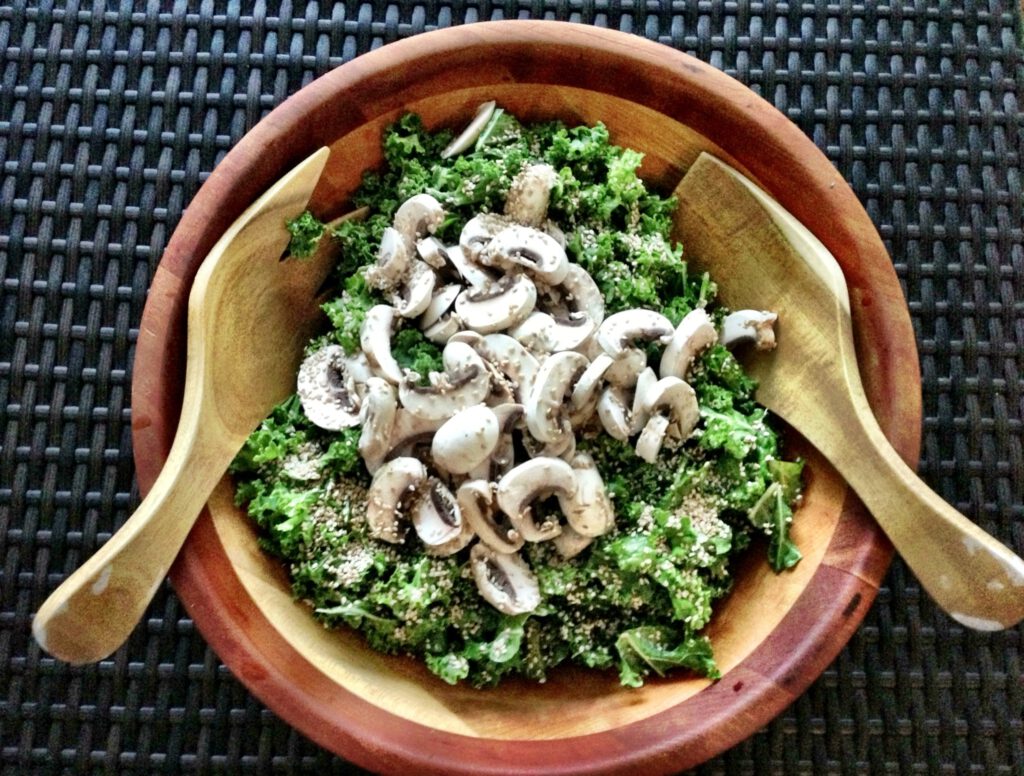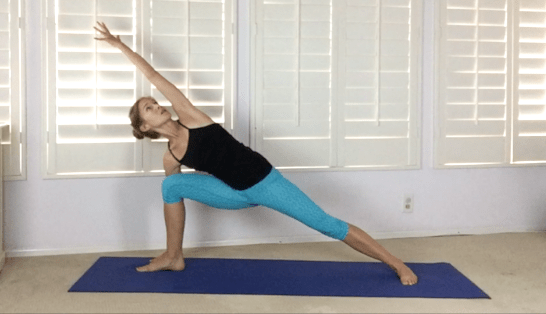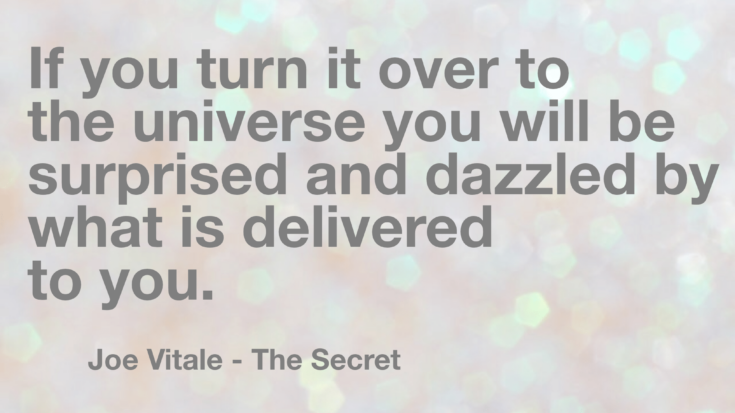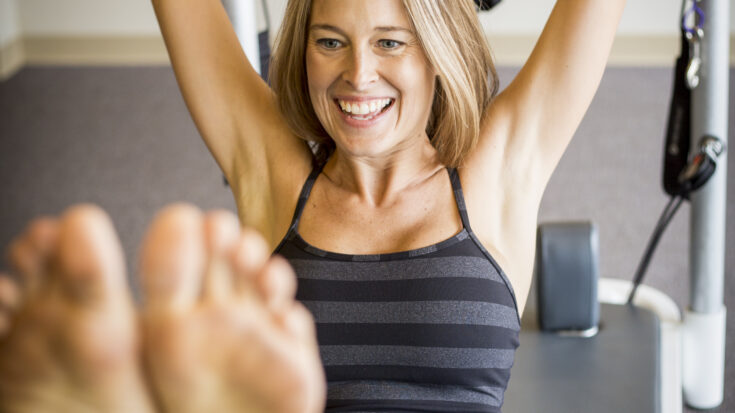I was diagnosed with endometriosis 11 years ago. I’ve experienced the pain and frustration with endometriosis symptoms, the triumph and trials of surgery, as well as the joy of managing it naturally and giving birth to a healthy daughter. I am not a doctor and this information is not intended to treat or diagnose any condition. I am simply sharing my experiences and what has and has not worked for me over the years. My hope is that every woman with endometriosis feels hope and knows she is not alone.
If you would like to know more and here some of my more personal stories I don’t share here on the blog, you can sign up for my endometriosis and fertility email list.
In the first part of this post, I go through the facts about endometriosis, including common endometriosis symptoms, causes and treatments.
In the second part, I’ll tell you my personal experience and story. I’ll tell you what has worked for me, what has been difficult, and everything I know after living with endo for the past 11 years. I hope it helps you on your own journey.
WHAT YOU SHOULD KNOW ABOUT ENDOMETRIOSIS
What is endometriosis?
Endometriosis is a medical condition that occurs when the tissue that lines the uterus (the endometrium) grows outside of the uterus. This usually occurs on the ovaries, fallopian tubes, uterine ligaments, the outer surface of the uterus and the lining of the pelvic cavity. While these are the most common sites for endometriosis, it has also been found in the lungs, arms, thighs and brain.
When a woman with endometriosis has her period, all of this endometrium tissue responds the same. It builds up, breaks down and sheds. Meaning, it bleeds. While the tissue in the uterus flows out of the body through the vagina when it sheds, the tissue found in other locations has no where to go when this happens. This results in internal bleeding, inflammation and scarring anywhere that endometriosis is found.
Over 6.3 million women and girls in the United States have endometriosis, and it is estimated that 10% of women worldwide experience the disease. These numbers could easily be low, as many women go through life without ever getting a proper diagnosis (source).
What causes endometriosis?
No one knows for sure. There are some theories, the most common of which is called retrograde menstruation. This theory states that, during menstruation, blood containing endometrial cells “backs up” through the fallopian tubes and into the pelvic cavity, where it sticks and grows.
Other theories include embryonic cell growth, the transport of endometrial cells to other parts of the body through blood vessels or lymph fluid, immune system disorders, starting your period at a young age and exposure to the chemical dioxin before being born.
How is endometriosis diagnosed?
Unfortunately, endometriosis can only be truly diagnosed through exploratory surgery (a laparoscopy is the most common). Without surgery, doctors can use a patient’s history and subjective complaints to come to a working diagnosis, but it can’t be confirmed without surgery.
What are the most common endometriosis symptoms?
- Common endometriosis symptoms include:
- Excessive pain before and during menstruation
- Excessive bleeding during menstruation
- Low back pain
- Pelvic pain
- Fatigue
- Pain with sex
- Pain with bowel movements (especially during menstruation)
- Gastrointestinal problems, such as diarrhea, constipation and nausea (endometriosis is often times misdiagnosed as Irritable Bowel Syndrome)
- Allergies
- Chemical sensitivities
- Infertility (due to scarring around ovaries and fallopian tubes)
I think it’s important to note that the amount of endometriosis does not always correlate with the amount of pain a person is in. Some people are found to have large endometrial growths and have no pain, while others have small growths with severe pain.
How is endometriosis treated?
The recommendation of most doctors for endometriosis treatment is hormonal drug regimens, usually a contraceptive pill. It can limit endometriosis signs and symptoms.
Pain medications, including NSAIDS, are also sometimes recommended.
In addition to diagnosing endometriosis, a laparoscopy can also be used to remove endometrial growths. While this can help short term, it is usually assumed the growths will return and another procedure will be needed in the future.
While doctors don’t commonly address natural treatments for endometriosis, there are many options for women who want to either avoid or supplement medication and/or surgery. I’ll address many of these below!
THE “OTHER STUFF” YOU SHOULD KNOW – MY STORY
What is endometriosis?
It’s something super confusing and frustrating that no one tells you about when you are young. You probably have no idea what it is until you are suddenly told you have it. Then you have to spend all night researching what it means for your life, and all you find are horror stories about pain and infertility.
That was me when I was first diagnosed, and I know the feeling well. I also know that, when you dig deep enough, you can find success stories and happy endings with endo. I am one myself. I was determined NOT to let endo define or beat me. I have it, but I would not become it.
That’s what you need to believe to move forward with this diagnosis. Stay hopeful and joyful and take control over your health.
My endometriosis symptoms and journey to diagnosis
I started my period when I was eight years old.
Yep, eight.
I had painful and heavy periods through high school, but then they calmed down. I would describe my periods as pretty normal through college and my early 20’s. I then started experiencing significant pain and cramping. Not during my periods necessarily, but during ovulation. I had sharp pains on either my right or left side that would last 48 hours around the time of ovulation.
I then started experiencing back pain when I was 21 years old. It got progressively worse, and went through physical therapy and had an MRI to help determine the cause. Neither helped or gave any information as to what was causing my pain.
I also started suffering significant pain with sex. I know this isn’t something people like to talk about, as it’s embarrassing and shameful. I mean, who wants to tell their partner that sex hurts? I thought there was just something wrong with me, so I kept it to myself.
Then I woke up one night in 2004 with excruciating pain in my lower right abdomen. I had to be driven to the hospital, where they finally diagnosed a possible ovarian cyst that had burst.
Over the next year, I would have to go to the ER again with another “ovarian cyst”. I had numerous CT scans, ultrasounds and doctor visits. I even had a colonoscopy because I was having such stomach pain.
None of it showed anything.
Finally my PCP at the time looked at everything together and formed a theory. I remember her calling me and saying, “I think you might have endometriosis”.
I had no idea what that was and spent the night in front of my computer. I almost cried when I found the first website explaining what endo was, because it felt like they were talking about me.
I knew I had found the cause of my pain and problems.
I followed up with my OBGYN, who recommended a laparoscopy to confirm the diagnosis. I was 28 years old and had always wanted children. I also was in a good amount of pain and didn’t want another trip to the ER.
In September of 2005, I went for it.
Treatment for endometriosis
I remember waking up from surgery wondering what I would hear. Did I have it? Did I not? Would I be able to have kids?
My doctor told me that I did indeed have endometriosis. They removed it from my abdominal cavity, appendix and right groin area. I was extremely lucky and blessed that my ovaries and fallopian tubes looked good and were unaffected.
Then I heard the words that would change the course of my life:
“Endometriosis does not go away and is not curable. While we removed it, it will most likely grow back. You are at a greater risk of not being able to have kids due to this. You will need to find a way to manage it.”
I made it my life mission to do everything I could to learn about, manage and treat my own endo.
The surgery did help me tremendously. It almost completely eliminated my back pain, and I haven’t experienced another ER trip since then. I am thankful I had it and wouldn’t change my decision to do it.
I also don’t think it’s for everyone and there are definitely different things to take into consideration. There are risks from scar tissue developing. It is surgery. You need to make sure you are 100% ready to take that step, if and when it’s recommended for you.
There are many holistic options for treating and managing endometriosis. Basically, the pain from endo – and most of the pain in our body – is caused from inflammation. Decrease the inflammation in your body, and you will decrease the pain.
I focused on the things I knew best and what felt right to me. I personally chose to not take oral contraceptives or the pill to help manage my symptoms. I had been on the pill for about five years prior to my diagnosis. For various reasons, I made a choice to take myself off the pill, and I’ve been off ever since. I’m not making any overall recommendations, but this was the choice that was best for me.
I researched and experimented and eventually settled on the program that helped me manage my endometriosis and get pregnant naturally in 2012.
I believe these things, along with a positive attitude, have helped keep me healthy, even as I had another laparoscopic surgery in 2016. When I came out of surgery the doctor said, “I can’t believe you look and act as healthy as you do considering what I found inside your pelvis”. I truly believe the things I list below have kept me functioning, moving and happily living despite an endometriosis and frozen pelvis diagnosis.
Because of the extent of the endometriosis damage they found in my latest surgery, we were told IVF was our only chance at having more babies. If you are on a similar path or would like to know more, you can read that story here.
The three main pieces of my own holistic program are diet, exercise and supplements (vitamins).
Diet
After having surgery, I started reading everything I could about what kind of foods I should be eating. There was so much information out there, I quickly got overwhelmed. I decided to do an “elimination” diet to start, which would help me determine what I was sensitive to.
I discovered I was extremely sensitive to gluten, and somewhat sensitive to dairy. I’ve also found over time that soy and beans are ok for me, but only when I keep it to about once a week.
My normal diet follows a combination of things, but mostly is my own mix of an anti-candida, mostly gluten-free and low-glycemic diet. High-glycemic foods spike your blood sugar, which causes increased inflammation in your body. Remember what I said about inflammation causing pain? I decided to use food to help decrease that inflammation. For me that meant removing highly processed carbohydrates, non-organic meats, gluten, sugar and most dairy.
(I also feel better when I don’t drink coffee, so I try to stick to mostly tea. But a girl just needs her coffee sometimes!)
I have some previous posts about my diet here and here. You can also get my Superfood Fertility Grocery List for free here. It will give you an idea of the foods I eat the most and help me feel the best.
Exercise
Movement saved me. It saves me over and over again.
I tend to be an exaggerator, but I’m not exaggerating here. Regular exercise that includes a combination of cardio, weight training and stretching keeps both my body and mind healthy and sane.
The most important piece of my exercise program is my regular Pilates and yoga practices.
Pilates gives me control over my body. It makes me feel strong. I have learned to breathe through every exercise I do, and it even helped me through a very long and hard labor. Pilates is where I first discovered muscles I didn’t know I had, and it gives me confidence and power. It does all of this in a very non-strenuous way, meaning I can do it even on my painful days.
I discovered yoga a few years after having surgery, and it was able to open my hips in ways other exercises couldn’t. I knew I had scar tissue in my abdomen and hips from the endometriosis and surgery, and I continued to have occasional pain and tightness in those areas. Working into deep backbends and hip stretches has helped keep those areas from tightening up.
If you are just starting out, I would recommend getting into Pilates first and then incorporating yoga when you have a little more core control and strength. The extreme yoga poses will feel more doable when you have that ability.
Here is the workout I have specifically developed for endometriosis and fibroid pain, and here is a good Pilates/yoga fusion workout if you want a little of both.
Vitamins/Supplements
These are my secret weapons. I have been taking very specific minerals, antioxidants and Omega 3’s since immediately after the surgery, and I plan on taking them the rest of my life.
When you have endometriosis, your body is constantly in a “fight or flight” place. It’s trying to figure out the best way to address the disease, but it’s also trying to deal with everything we throw at it. Workouts, stress and the common cold can all cause your cells to go into overdrive trying to keep you healthy. That doesn’t leave much fight for your addressing your endometriosis.
I feel like my vitamins and supplements give my cells a boost so they have reserves and extra “oomph” to deal with the endo. They fill in the extra spaces that food can’t reach. The ones I take are here and here.
Where does that leave you?
Be hopeful. Stay encouraged. Take control. Be patient and graceful with yourself and your body.
Endometriosis is a journey. It will challenge you, teach you and guide you. It will stretch you and mold you.
It can make you a better person if you just let it.
Take the advice and recommendations that work for you, and leave the others. This is your path and yours alone.
You are in control. You always have been.
If you would like to know more and here some of my more personal stories I don’t share here on the blog, you can sign up for my endometriosis and fertility email list.

